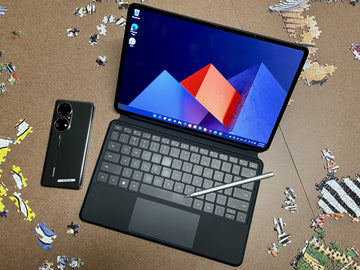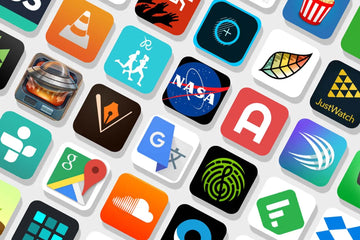In the dynamic landscape of personal computing, the emergence of 2-in-1 tablets has been a game-changer. These versatile devices, exemplified by models like the Alldocube iPlay 50 Pro Max and the Lenovo Xiaoxin Pad Plus, have successfully blurred the boundaries between traditional laptops and tablets. Let's embark on a journey to explore the rise of 2-in-1 tablets, understanding how they offer the best of both worlds.
The Fusion of Form and Function
The Versatility of a Tablet with the Power of a Laptop:
2-in-1 tablets represent a harmonious blend of the portability and convenience of a tablet and the robust functionality of a laptop. Devices like the Alldocube iPlay 50 Mini Lite seamlessly transform from a sleek tablet for casual browsing and entertainment into a productivity powerhouse when paired with a keyboard attachment, providing users with unparalleled versatility.
Flexibility in Usage Modes:
One of the defining features of 2-in-1 tablets is their flexibility in usage modes. Whether you prefer the classic laptop mode for work tasks, tent mode for presentations, or tablet mode for leisurely browsing, these devices effortlessly adapt to your needs. The Lenovo Tab P11 Pro, for instance, exemplifies this flexibility, offering a range of modes to enhance user experience.
Powering Productivity On-the-Go
Compact Design for Mobility:
2-in-1 tablets are designed with mobility in mind. Their compact and lightweight form factors, such as seen in the Chuwi HiPad XPro, make them ideal companions for professionals and students on the move. Slip them into your bag, and you have a powerful computing device ready to accompany you wherever you go.
Seamless Transition from Work to Play:
The ability to seamlessly transition from work to play is a hallmark of 2-in-1 tablets. After a productive work session, detach the keyboard, kick back, and enjoy your favorite content in tablet mode. Devices like the Huawei MatePad Pro strike the perfect balance, offering a professional edge when you need it and a relaxed tablet experience when it's time to unwind.
Key Considerations for Choosing a 2-in-1 Tablet
Performance Capabilities:
Consider the performance capabilities of the device, with options ranging from the power-packed BMAX MaxPad I10 Pro to the sleek Teclast T60. Assess your specific needs, whether it's for casual use, professional tasks, or creative endeavors, to ensure the chosen tablet aligns with your computing requirements.
Connectivity and Accessories:
Explore the connectivity options and available accessories, like detachable keyboards and styluses. The OnePlus Pad, for example, offers a seamless accessory ecosystem that enhances productivity and creativity. Evaluate how these accessories contribute to your overall user experience.
The Future of Personal Computing
The rise of 2-in-1 tablets marks a significant shift in the way we approach personal computing. These devices have not only redefined the possibilities of portable computing but have also ushered in an era where users no longer have to compromise between the convenience of a tablet and the functionality of a laptop. As technology continues to advance, the future holds exciting prospects for 2-in-1 tablets, promising even greater innovations and an enhanced user experience.

In conclusion, whether you're drawn to the compact design of the Samsung Galaxy Tab S7 or the performance capabilities of the Lenovo Xiaoxin Pad Pro, the world of 2-in-1 tablets offers a diverse array of options. Embrace the fusion of form and function, and experience the best of both worlds in a single, versatile device. The rise of 2-in-1 tablets signifies not just a shift in design but a revolution in how we interact with our digital lives.









